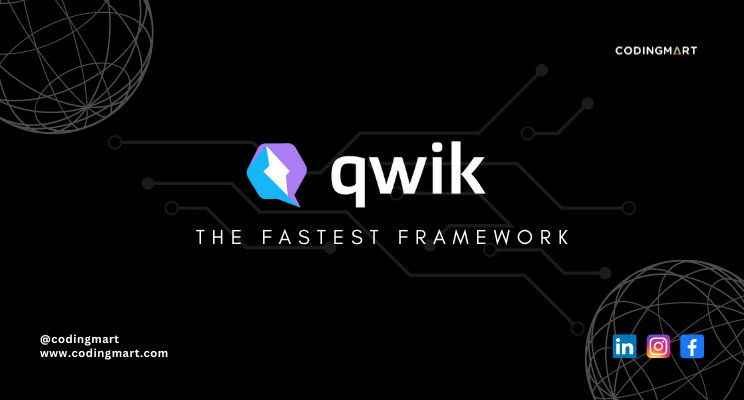blogs
Qwik: The Fastest Framework with O(1) Load Time for Websites

Websites send JavaScript to the browser to provide interactivity. The amount of JavaScript downloaded to the browser is going up every year, as the complexity of websites goes up. Most JavaScript frameworks download and execute all of the code at once. It ends up with load time getting slower because the load time is O(n).
We are excited to introduce Qwik, a cutting-edge framework that reimagines the landscape of reactive user interfaces (UIs) for maximum performance. Qwik’s core premise is to prioritize delivering HTML with minimal JavaScript, allowing for incremental introduction of interactivity as needed, and setting the stage for the evolution of front-end JavaScript.
What is the Problem?
Modern websites require vast amounts of JavaScript to become interactive. Too much JavaScript manifests itself in two problems :
- Network bandwidth: A large amount of code is shipped to the client, which may take a long time on slow networks.
- Startup time: Once on the client, the code needs to be executed (as part of hydration) to get the site interactive.
What makes Qwik stand out is its fine-grained model, meticulously isolating specific segments of the application to be hydrated on an as-needed basis. This unique approach enables Qwik to achieve exceptional performance, presenting an intriguing alternative path for front-end development.
Resumability
A standout feature of Qwik is its resumability. By skillfully combining server-side and client-side rendering, Qwik successfully avoids the double taxation conundrum common in contemporary frameworks, where the hydration process is performed twice—once on the server and again on the client. Instead, with Qwik, the server sets up a fully functional HTML page, and the client executes minimal code to continue or resume the process smoothly for the user.
Qwik is not React
Although it looks similar to React and uses JSX. It offers the fastest possible page load time regardless of the complexity of a website. Its load time is O(1). Furthermore, Qwik has evolved to provide a more developer-friendly, React-like syntax, while maintaining its advanced and unparalleled reactive engine, defining reactive boundaries along state, templates, and listeners.
Let’s talk TTI
Central to Qwik’s focus is enhancing the time to interactive (TTI) metric—the measure of a web page’s responsiveness from the user’s request to its interactivity. Unlike time to load (TTL), which depends on file sizes and network speed, TTI considers the additional time required for the client to unpack and execute JavaScript code to enable page interactivity. Qwik is dedicated to optimizing this process for a superior user experience.
Death by Closure (and how qwik solves it)
Qwik has tackled the challenge of “death by closure,” a technical hurdle to fast TTI. A buy button on a page is complex and is clicked rarely. Yet the buy button eagerly forces us to download all of the code associated with it, because it is what closures do. By using a global event listener that interacts with serialized listeners, Qwik has streamlined the runtime app, reducing the overhead caused by closures and maintaining a responsive interface.
Code Splitting and Lazy Loading
Another impressive aspect of Qwik is its finely tuned code-splitting strategy. It loads interactive code only as needed, based on user demands, enabling bundlers to package these chunks into larger bits when appropriate. Developers will appreciate Qwik’s unique design, with three separate functions for creating state, template, and listeners. This flexibility allows the framework to load only the essential components required for a given task.
Think Qwik
The Optimizer tool, which converts React-like syntax behind the scenes, further enhances the developer experience by transforming the code into efficient stubs that enable app resumability in small, manageable chunks. Though Qwik’s final output may appear distinct from other frameworks, its integration with the Optimizer brings it in line with industry standards. Additionally, QwikCity, a set of higher-order features like routing, has been introduced to facilitate the development of comprehensive applications.
To sum up, the basic idea behind Qwik is that it is resumable. It picks up where the server left off, with only 1KBthat needs to execute on the client. And this code will stay constant no matter how large and complex your application gets. We invite everyone to explore the exciting potential of Qwik. Embrace the future of reactive UIs as Qwik continues to evolve, refining its capabilities and expanding its horizons.
Together, let’s unlock new levels of performance and elevate the user experience to unprecedented heights!


